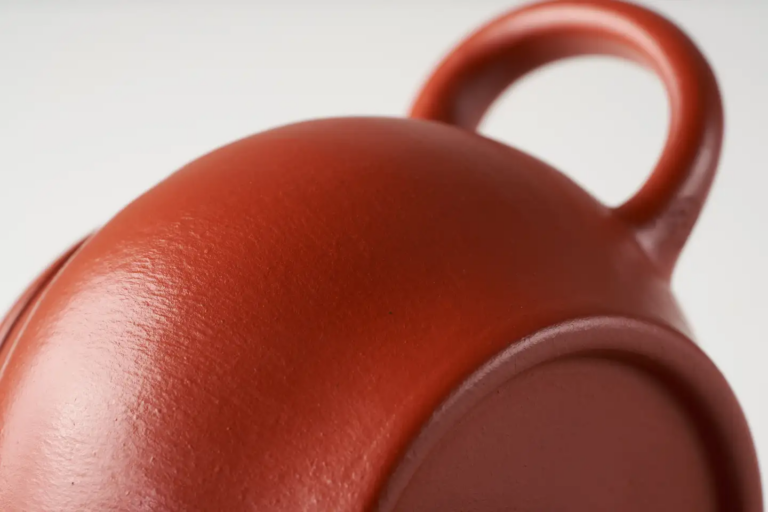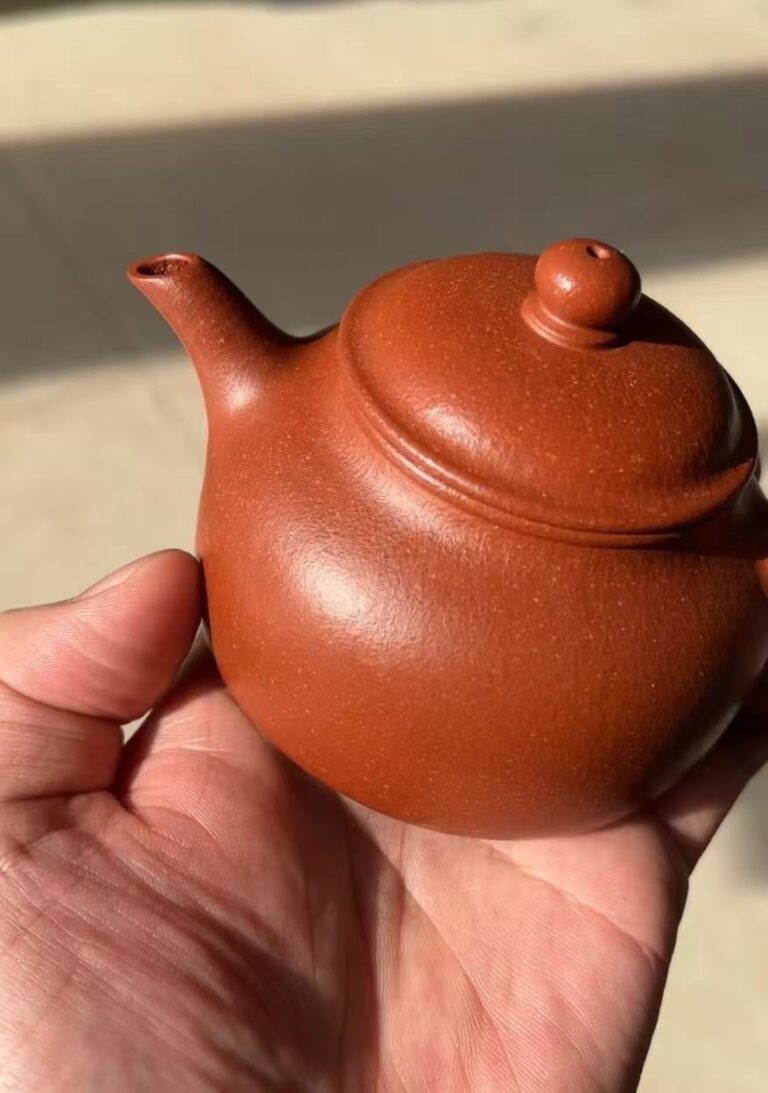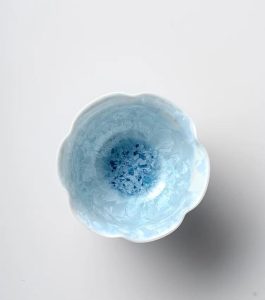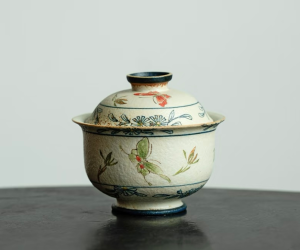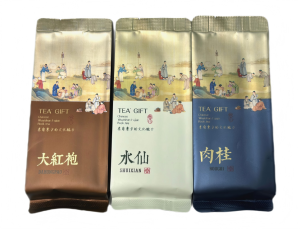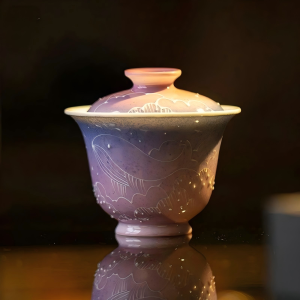
When you sip a cup of Da Hong Pao, you’re not just tasting one of China’s most celebrated teas – you’re participating in centuries of tradition and culture. This revered rock oolong from the Wuyi Mountains carries with it a rich heritage that extends far beyond its complex flavors and aromas.
In our previous guide, we explored what Da Hong Pao is and how to enjoy it as a tea. Now, let’s delve deeper into the fascinating story behind this legendary “Big Red Robe” tea and discover why it holds such a special place in Chinese culture.
The Legendary Origins of Da Hong Pao
The origins of Da Hong Pao are steeped in myth and legend, adding to its mystique and cultural importance. While the exact historical accuracy of these tales may be debated, they continue to be passed down through generations, each version adding to the tea’s legendary status.
One of the most popular stories dates back to the Ming Dynasty (1368-1644). According to legend, a scholar named Du Qiong was traveling through the Wuyi Mountains when he fell ill. A compassionate monk offered him some tea from four ancient bushes growing nearby. After drinking the tea, Du recovered his health. Years later, having become emperor, he returned to the mountains to honor the miraculous tea bushes by draping them in red robes – thus giving birth to the name “Da Hong Pao,” which translates to “Big Red Robe.”
Another tale places the origin in the Qing Dynasty (1644-1912), where it’s said that the mother of the emperor was cured of an illness by tea from these same original bushes, earning them royal recognition and protection.
These legends, whether factual or not, have become integral to the identity of Da Hong Pao and demonstrate its long-standing association with healing properties and imperial prestige.
The Spiritual Connection to Wuyi Mountains
Beyond the legends, Da Hong Pao has strong ties to the spiritual and philosophical traditions of the Wuyi Mountains region. During the Tang Dynasty (618-907 AD), the area was established as both a Daoist sacred site and a center for Confucian scholarship. Buddhist monasteries also flourished in the region.
This unique convergence of spiritual traditions contributed to the development of tea culture in Wuyi. Monks and scholars alike found that tea enhanced their meditation and intellectual pursuits, leading to the refinement of tea cultivation and appreciation techniques that would eventually produce Da Hong Pao.
Even today, many tea masters in the Wuyi Mountains approach tea-making with a meditative mindset, viewing the entire process – from cultivation to brewing – as a form of moving meditation that connects them to nature and tradition.
Da Hong Pao in Traditional Tea Ceremonies
While not as formally ritualized as Japanese tea ceremonies, Chinese tea culture has its own refined etiquette and traditions, particularly when it comes to high-quality teas like Da Hong Pao.
In traditional settings, serving Da Hong Pao follows specific customs that reflect respect for guests and appreciation for the tea itself:
- Preheating the Teaware: Before brewing, all teaware is rinsed with hot water to prepare it for optimal infusion. The Yixing teapots are recommended for those aged. And Gaiwan is best for newbies!
- The First Pour: The initial steeping is often discarded, serving to awaken the leaves and cleanse them.
- Proper Serving Technique: When pouring, the host typically serves others before themselves, starting with the eldest or most honored guest.
- Refilling Ritual: Keeping the teapot full is considered a sign of hospitality and attentiveness.
- Gestures of Gratitude: Tapping two fingers on the table is a traditional way to thank the person pouring the tea silently.
These customs transform the simple act of sharing tea into a meaningful social and cultural experience, emphasizing harmony, respect, and mindfulness.
Modern Cultural Significance
In contemporary China, Da Hong Pao continues to hold cultural importance. It remains a prestigious gift item, often presented during important business meetings, diplomatic exchanges, and family celebrations. Its status as one of China’s Ten Famous Teas ensures its place at significant occasions.
Interestingly, Da Hong Pao has also taken on a new symbolic meaning recently. In 2002, a 20g sample of Da Hong Pao tea sold at auction for an astonishing 180,000 yuan ($27,000), highlighting its value not just as a consumable but as a cultural asset. This record-breaking sale cemented its reputation as one of the world’s most exclusive teas.
Moreover, in 2019, Da Hong Pao was included in the national intangible cultural heritage list, recognizing the traditional skills involved in its production and ensuring that this knowledge will be preserved and passed on to future generations.
Experiencing Da Hong Pao Culture Firsthand
For those interested in experiencing Da Hong Pao culture directly, the Wuyi Mountains offer numerous opportunities. Tea tourism has grown significantly in the region, allowing visitors to:
- Tour working tea plantations and witness harvesting firsthand
- Participate in tea-making workshops
- Stay in traditional tea houses
- Attend local tea festivals, particularly during the spring harvest season
- Visit the historic “mother trees” from which all modern Da Hong Pao plants are descended
Visiting during the spring harvest (typically April-May) offers a special opportunity to see the tea community in action and understand the dedication that goes into producing each batch.
More Than Just a Cup of Tea
To truly appreciate Da Hong Pao is to understand that it represents much more than just a fine oolong tea. It embodies centuries of Chinese philosophy, artistry, and social tradition. Each cup tells a story of emperors and monks, of legends and laborious craftsmanship, of patience and mindfulness.
As you continue your journey with Da Hong Pao, remember to take time to appreciate not just its evolving flavors across multiple infusions but also the cultural depth it brings to every cup. Whether you’re enjoying it alone in quiet reflection or sharing it with friends and family, you’re participating in a tradition that has endured for hundreds of years.
So next time you brew a pot of Da Hong Pao, take a moment to consider the remarkable journey that brought those leaves to your cup – and savor not just the taste, but the rich cultural heritage within.

